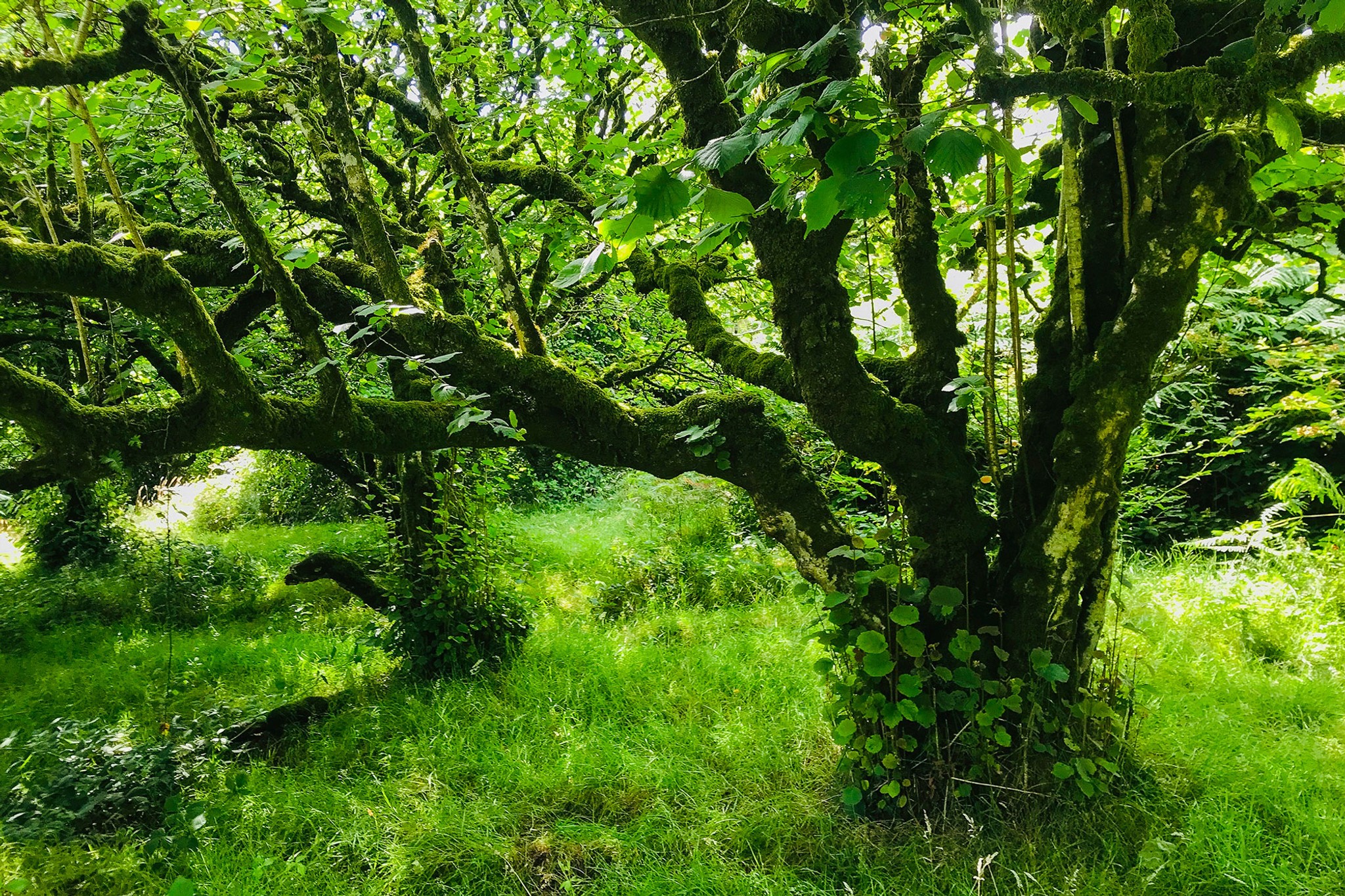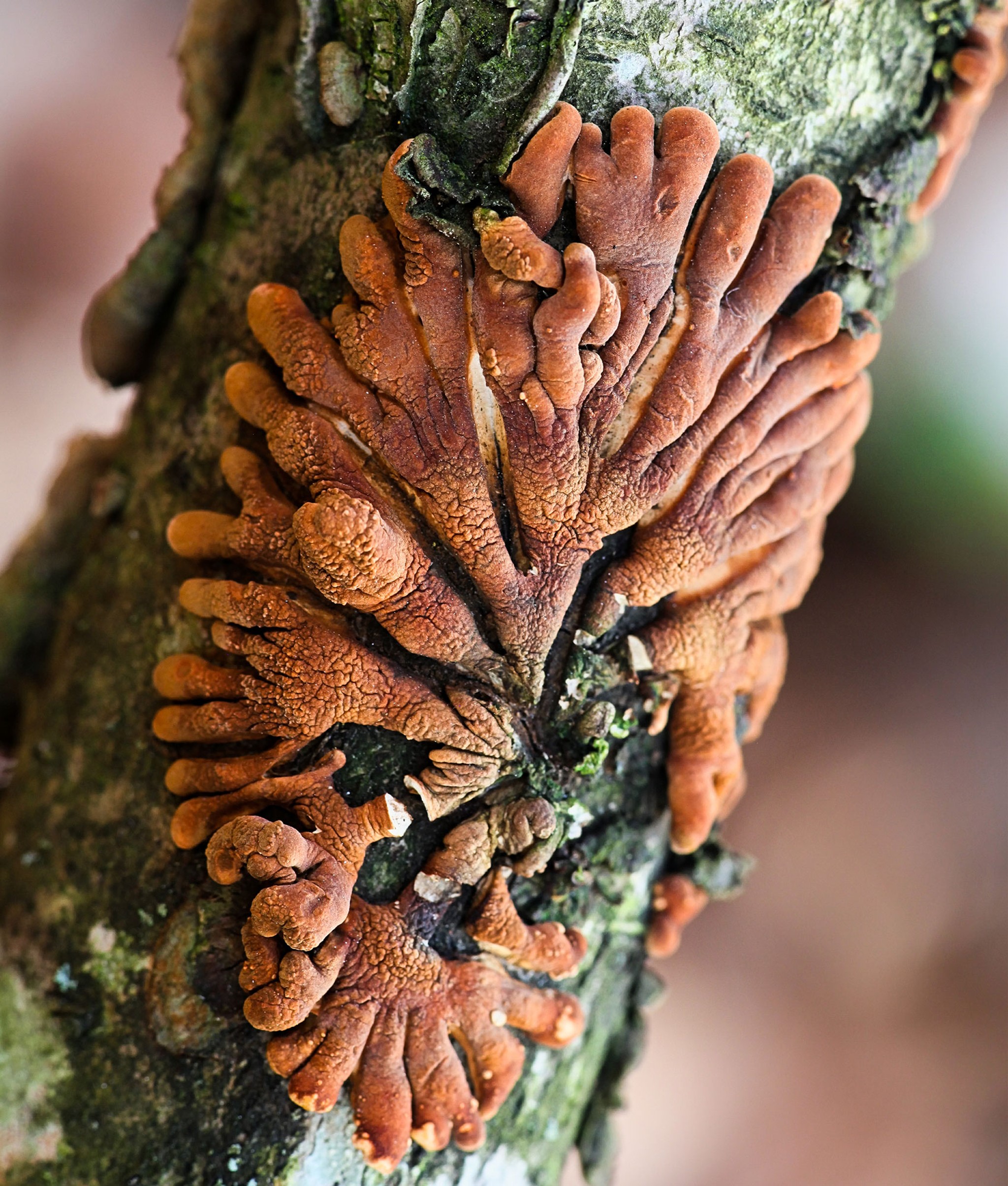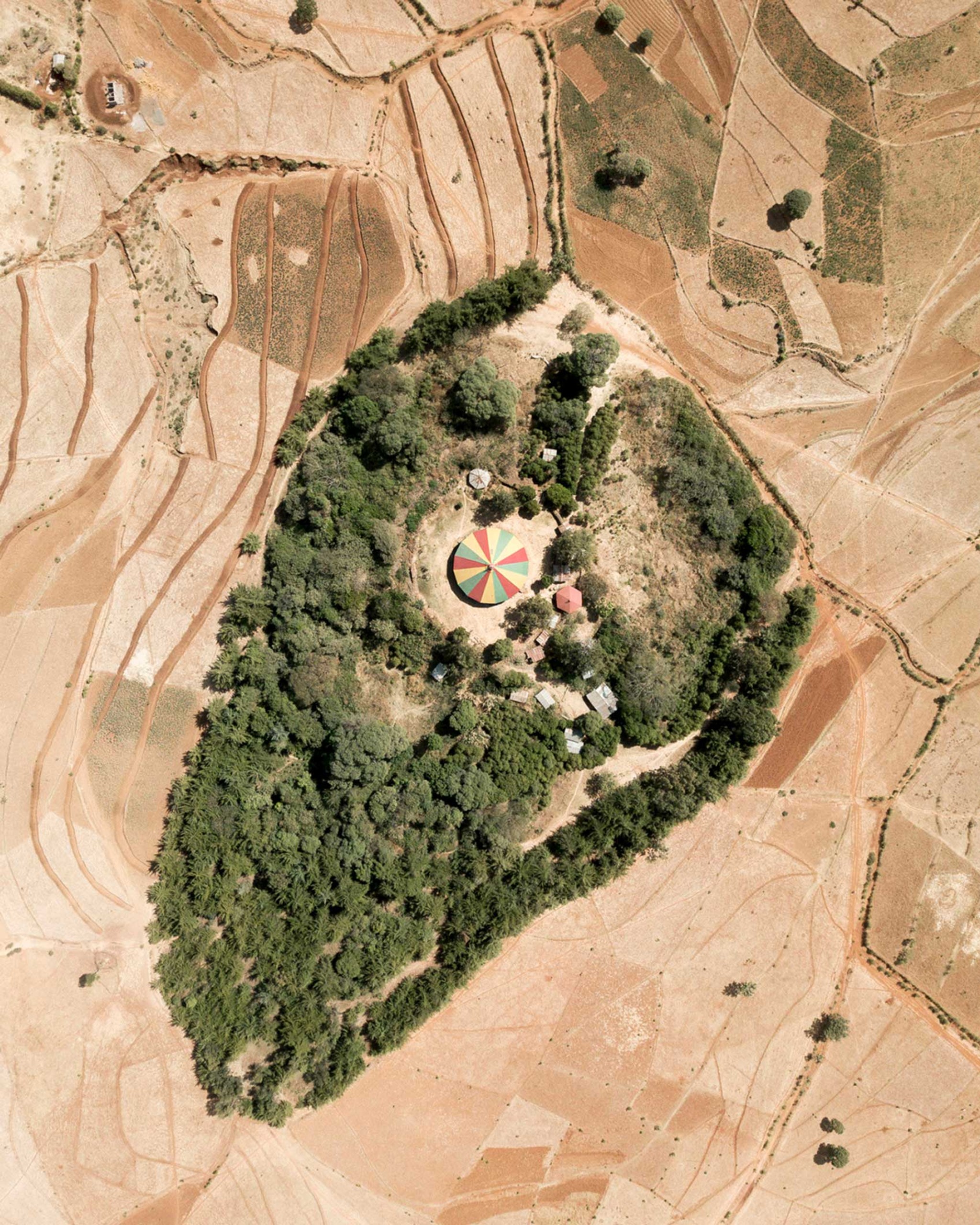The Atlantic Hazelwoods

The Atlantic hazelwoods are a rare aspect of temperate rainforest that were once bountiful along the western fringes of Europe, mainly found growing in the thin soils and strong winds of the western coasts.
Until recently ecologists perceived hazel as just a coppiced understory shrub, but in fact the hazelwoods are believed be even older than the Atlantic oakwoods and go back as far as 10,000 years.

Hazel is found widely throughout Europe but only develops into the rarer Atlantic hazelwoods, a habitat of high biodiversity, in a few unique places; mainly along the inhospitable damp western coasts of Scotland and Ireland.
Atlantic hazelwoods are home to some of Europe’s richest collections of oceanic bryophytes and lichens combined with an abundance of flowers, ferns and fungi.
Small lichens form thin, colourful ‘crusts’ on the smooth bark of young hazel stems. As stems grow older and thicker, the bark roughens, trapping moisture that then support bryophytes and larger, leafy-lobed lichens like tree lungwort. All such lichens require ‘old-growth’ woodland. These lichens aren’t found in hazel that’s been coppiced or in hazel stands.
Atlantic hazelwoods are also home to some fascinating and beautiful fungi, such as spring hazel cup and the particularly curious hazel gloves. This very rare fungi seem to be endemic and to occur only in ancient Atlantic hazelwoods.


This habitat still gets very little attention or even recognition and like most ecosystems is heavily stressed and under threat from outside human influences.




